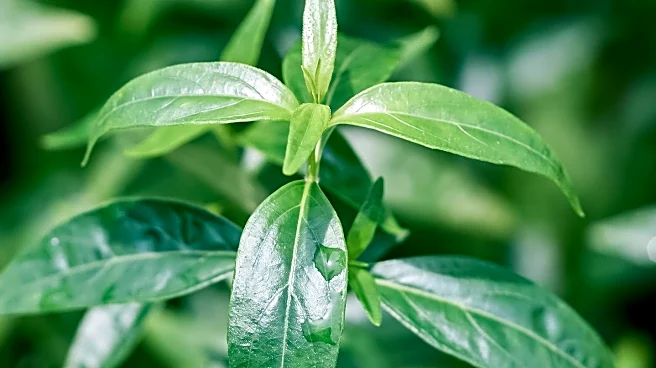What's Happening?
A recent study has investigated the microbiological and pharmacological properties of phytochemicals extracted from five ethnomedicinal plants belonging to the Zingiberaceae and Lamiaceae families. The
research focused on the taxonomical features, morphological characteristics, and medicinal insights of plants such as Z. officinale, O. basilicum, O. syriacum, O. vulgare, and S. rosmarinus. The study revealed significant variations in flavonoid and phenolic content among these plants, with Z. officinale and S. rosmarinus exhibiting high levels of these compounds, known for their antioxidant and anti-inflammatory properties. The antimicrobial screening showed varying degrees of effectiveness against bacterial and fungal pathogens, highlighting the potential therapeutic value of these plants.
Why It's Important?
The findings underscore the importance of these ethnomedicinal plants as natural sources of bioactive compounds with therapeutic value. The high flavonoid and phenolic content in certain plants suggests potential benefits in managing oxidative stress-related conditions such as cardiovascular diseases and certain cancers. The antimicrobial properties of these plants could offer alternative solutions to combat bacterial and fungal infections, especially in light of increasing antibiotic resistance. This research emphasizes the need for further studies to explore the specific compounds, bioavailability, and potential clinical applications of these plants.
What's Next?
Future studies are recommended to isolate specific flavonoid and phenolic compounds and explore their bioavailability and synergistic effects in humans. Additionally, research should focus on how environmental factors and cultivation methods influence the production of these compounds to optimize their medicinal use. Clinical trials and bioavailability studies are necessary to substantiate the therapeutic potential of these plants and their extracts.
Beyond the Headlines
The study highlights the potential of ethnomedicinal plants in contributing to sustainable healthcare solutions. The exploration of natural compounds for therapeutic use aligns with growing interest in alternative medicine and the need for more sustainable and less harmful treatment options. The research also points to the importance of preserving biodiversity and traditional knowledge associated with these plants.











